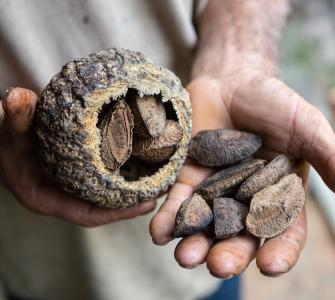Indigenous Peoples and Local Communities (IPLCs) own or manage at least a quarter of the world’s lands, and have a proven track record of strong environmental stewardship, even outperforming protected areas in many cases. IPLCs that have environmentally-friendly economic development opportunities, such as non-timber forest products or sustainable fishing enterprises, are in a stronger position to withstand pressures to engage in environmentally-damaging income generating activities, such as poaching and logging. However, due to social, economic, and political marginalization, many IPLCS are often disenfranchised and left to live in poor conditions without access to the critical resources needed to develop viable livelihood opportunities and enterprises.
In 2020, Conservation Strategy Fund conducted a global comparative study for The Nature Conservancy (TNC) to identify, evaluate, and synthesize lessons learned from examples of community-focused enterprises and investments in partnership with IPLCs. The study was designed to (1) help TNC share, replicate, and scale models that generate positive economic, social, and environmental outcomes with IPLCs around the world and (2) provide guidance to indigenous communities to help them identify and evaluate the feasibility of potential sustainable livelihood options, and and solve common challenges.
Successful community livelihood strategies require a feasible business model, the requisite human and operational capacity, access to capital and markets, and an enabling legal and policy framework. Examples from around the world of both successes and failures of such economic development efforts involving IPLCs can provide insights into the enabling conditions and common challenges, and how impact investment through both public and private sources can help overcome key barriers.
The objective of this study was to identify, evaluate, and synthesize lessons learned from 12 examples of community-focused enterprises that support economic livelihoods, human wellbeing, and environmental outcomes for IPLCs in various parts of the world. The scope of the study also included surveys of some key actors involved in incubation and impact investment in order to identify some of the opportunities and challenges they face when working with IPLCs.
Recommendations from the study include the following:
- Increase the number of incubators working with cooperatives and community-owned companies to provide capacity building, early stage financing, and connections to commercialization and distribution channels.
- Help community-focused enterprises conduct pre-feasibility studies to determine if the market can bear a price premium, and identify potential supply-chain partnerships and distribution channels to minimize intermediaries.
- Develop alternative investment structures that could help fill current gaps in the investment landscape for IPLCs, particularly in pre-seed and seed stages, by engaging and educating impact investors or by creating innovative investment vehicles that are suitable for both social enterprises and the hard assets required by agribusiness, forestry, and fishery sectors.
- Facilitate aggregator cooperatives, collective brands, and joint venture models that include a gradual transfer of ownership for communities that do not have business and commercialization experience. If communities want to engage in sales and distribution in addition to production, these models can provide the time and assistance needed for skill development.
Lessons learned from these examples can provide guidance for designing and financing community livelihood models, and can help organizations seeking to strengthen existing efforts or start new initiatives related to sustainable livelihoods.
Read our full report here.
This project was funded by The Nature Conservancy.
Photo: Brazil nuts
Photo credit: Shutterstock.com

